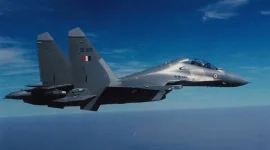- Views: 793
- Replies: 2

In a move to bolster its defence capabilities along the Line of Actual Control (LAC), the Indian Air Force (IAF) is planning a significant expansion of its airfield infrastructure.
The Ministry of Defence and the IAF are in advanced talks to take over three existing airstrips in Uttarakhand and construct a new one in Himachal Pradesh's Spiti Valley. This initiative aims to counter China's rapid infrastructure development in the region and enhance India's surveillance and response capabilities.
The three airstrips in Uttarakhand slated for takeover are located at Pithoragarh, Gauchar, and Dharasu. These airstrips have been used for special operations in the past, with aircraft like the C-130J landing there.
Additionally, a feasibility study has been conducted for a new airstrip at Rangrik in Spiti. This strategic location, close to the Tibetan border, would allow the IAF to monitor Chinese troop movements near Chumar and Demchok.
Air Chief Marshal AP Singh recently acknowledged the rapid pace of Chinese infrastructure development along the LAC, emphasizing the IAF's commitment to match these advancements. "We are beefing up capacities of airfields and also plan to utilize civil infrastructure and landing grounds in the central sector," he stated. This strategy includes collaborating with state governments to either take over existing airfields or secure their availability for IAF use.
The IAF is also exploring the use of fully operational civilian airports in Himachal Pradesh, such as those in Shimla, Kangra, and Kullu, to support operations in emergencies. These airports are capable of handling C-130J aircraft.
The expansion of airfield infrastructure is part of a broader effort to strengthen India's defence posture along the LAC. Existing airbases in the plains, such as Adampur, Ambala, Chandigarh, Bareilly, and Sarsawa, already play a crucial role in supporting operations on the China front.
The proposed airstrip at Rangrik holds strategic significance due to its proximity to Chepzi in Tibet and its potential to improve connectivity to the Spiti Valley, which is often cut off during winter due to heavy snowfall. This development would not only enhance the IAF's operational capabilities but also provide crucial support for civilian air traffic.
This initiative underscores India's determination to maintain a robust defence infrastructure in the face of China's growing military presence along the LAC. By expanding its network of airstrips, the IAF aims to enhance its surveillance capabilities, facilitate rapid troop deployments, and ensure logistical support to border forces, ultimately contributing to the security and stability of the region.


